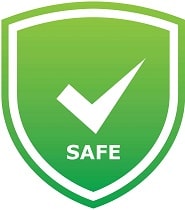Is Maternal Myasthenia Gravis Safe in Breastfeeding
Question
I am a breastfeeding mother and i want to know if it is safe to use Maternal Myasthenia Gravis? Is Maternal Myasthenia Gravis safe for nursing mother and child? Does Maternal Myasthenia Gravis extracts into breast milk? Does Maternal Myasthenia Gravis has any long term or short term side effects on infants? Can Maternal Myasthenia Gravis influence milk supply or can Maternal Myasthenia Gravis decrease milk supply in lactating mothers?
Maternal Myasthenia Gravis lactation summary

- DrLact safety Score for Maternal Myasthenia Gravis is 1 out of 8 which is considered Safe as per our analyses.
- A safety Score of 1 indicates that usage of Maternal Myasthenia Gravis is mostly safe during lactation for breastfed baby.
- Our study of different scientific research also indicates that Maternal Myasthenia Gravis does not cause any serious side effects in breastfeeding mothers.
- Most of scientific studies and research papers declaring usage of Maternal Myasthenia Gravis safe in breastfeeding are based on normal dosage and may not hold true for higher dosage.
- Score calculated using the DrLact safety Version 1.2 model, this score ranges from 0 to 8 and measures overall safety of drug in lactation. Scores are primarily calculated using publicly available case studies, research papers, other scientific journals and publically available data.
Answer by Dr. Ru: About Maternal Myasthenia Gravis usage in lactation
There is no further risk of complications with myasthenia during lactation (Klehmet 2010), although the course of puerperium may be unpredictable and may worsen in case of infection or short-term disease (Djelmis 2002). Breastfeeding is feasible and by no means contraindicated. In a series of 33 affected mothers with myasthenia, 76% successfully breastfed (Djelmis 2002); The mother should receive much support along with a effective control of her illness (Giwa-Osagie 1981, Camus 1989). Partial interrupted breastfeeding with formula supplementation may be required in those cases of extreme maternal fatigue (Djelmis 2002).Most treatments for myasthenia gravis (see info on pyridostigmine, neostigmine, prednisone, cyclosporine, azathioprine, immunoglobulin, tacrolimus) are compatible while breastfeeding (Skoglund 1978). Approximately 30% of infants may show a transient neonatal myasthenia due to transplacental passage of acetylcholine anti-receptor antibodies (Skoglund 1978); who should be treated and assisted since hypotonia interferes with a satisfactory feeding. There is a higher risk of transient neonatal myasthenia when the mother has not been thymectomized and with a short-term disease (Djelmis 2002, Roth 2006).There is no conclusive evidence on the excretion in significant amounts of acetylcholine anti-receptor antibodies into breast milk (Djelmis 2002) and/or that it would be responsible for cases of transient neonatal myelitis (Brunner 1992). An association between myasthenia and elevated prolactin levels has been found (Lysenko 1998, Tsinzerling 2006) and anecdotally reported with gigantomastia (Scarabin 2010)
Alternate Drugs for Disease, Disorder & other Mother´s Conditions.
Maternal Anemia(Safe)
Maternal Rheumatoid Arthritis(Low Risk)
Maternal Brucellosis(Low Risk)
Cancer(Unsafe)
Maternal Candidiasis(Low Risk)
Anthrax(Safe)
Maternal Cardiopathy(Low Risk)
Maternal Cold(Safe)
Cesarean Section(Safe)
Maternal Cytomegalovirus(Safe)
Chlamydia(Safe)
Maternal Depression(Low Risk)
Maternal Diabetes Mellitus(Low Risk)
Drug Addction(Dangerous)
Pregnancy(Safe)
Maternal Epilepsy(Low Risk)
Maternal Multiple Sclerosis(Low Risk)
Maternal Phenylketonuria(Safe)
In Vitro Fertilization(Low Risk)
Maternal Cystic Fybrosis(Low Risk)
West Nile Fever (WNF)(Low Risk)
Maternal Galactosemia(Safe)
Maternal Acute Gastroenteritis(Low Risk)
Giardia Lamblia(Safe)
Maternal Gonorrhea(Low Risk)
Maternal Herpes Simplex(Unsafe)
Maternal Hyperprolactinemia(Low Risk)
Maternal Hyperthyroidism(Low Risk)
Maternal Hypothyroidism(Safe)
inflammatory bowel disease (maternal)(Low Risk)
Maternal Surgery Intervention(Low Risk)
Maternal Leprosy(Low Risk)
Maternal Lyme Disease(Safe)
Augmentation Mammoplasty(Low Risk)
Breast Reduction Mammoplasty(Low Risk)
Maternal Mastitis(Safe)
Ménière(Low Risk)
Menses(Safe)
Migraine(Safe)
Maternal Myopia(Safe)
Maternal Otosclerosis(Safe)
Maternal Psychotic Disorder(Dangerous)
Maternal Rabies Infection(Low Risk)
Maternal Rubella(Safe)
Maternal Measles(Low Risk)
Vaginal Dryness(Safe)
Maternal Aids(Unsafe)
Maternal Syphilis(Low Risk)
Botulinum Toxin(Low Risk)
Maternal Toxoplasmosis(Safe)
Maternal Transplant(Unsafe)
Maternal Trichomoniasis(Safe)
Maternal Tuberculosis(Low Risk)
Maternal Varicella(Low Risk)
Maternal T-Cell Leukemia/Lymphoma 1(Dangerous)
Maternal Htlv-Ii Infection(Dangerous)
Narcolepsy(Low Risk)
Acne(Safe)
Hepatitis E(Low Risk)
Zika Virus Infection(Safe)
